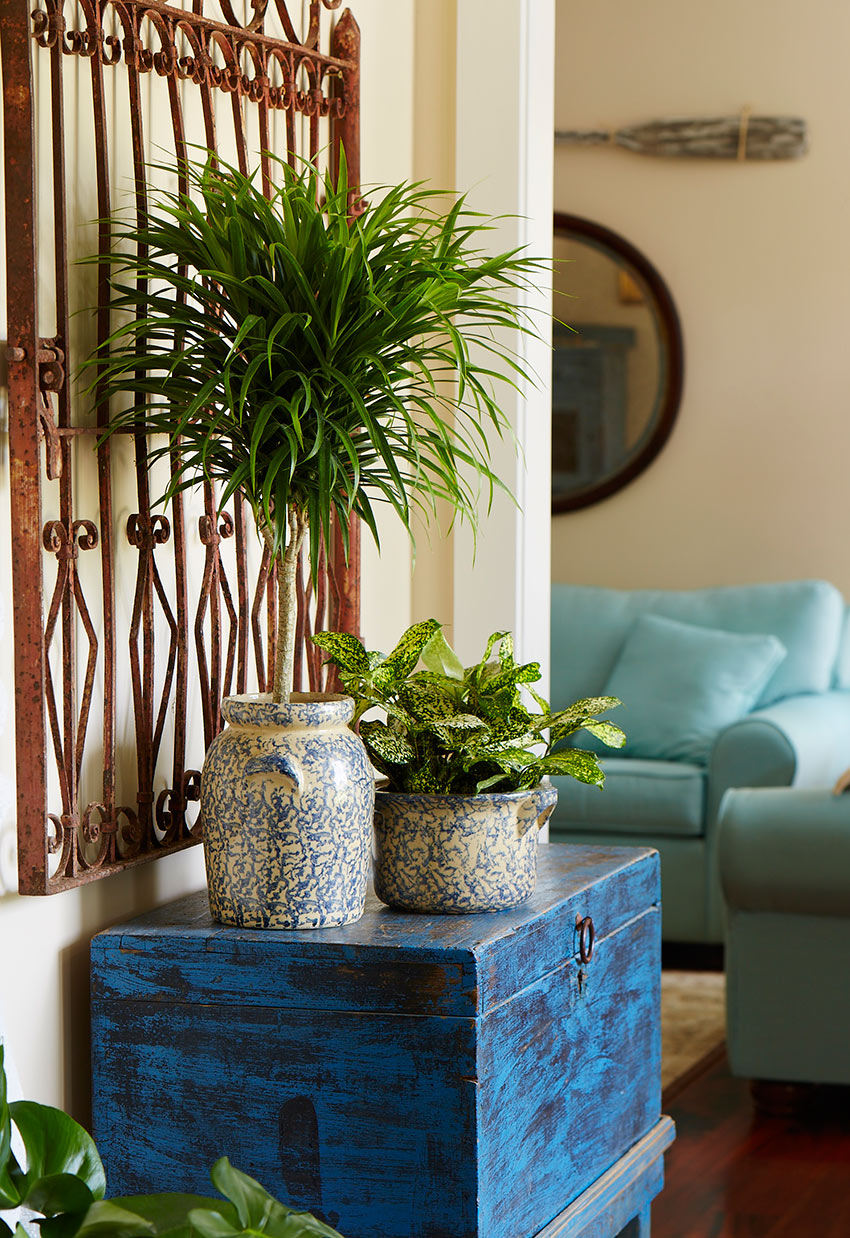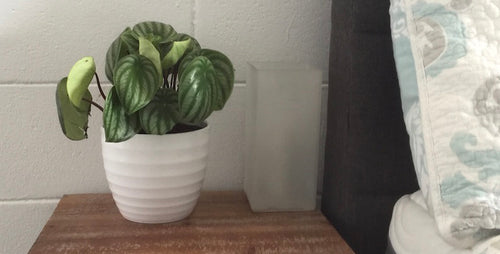
Dracaena Anita
A versatile plant, you can grow dracaena Anita as a tree or in a bushy form. It's available in a wide variety of
sizes, so you can find this modern houseplant for every spot in your home.
Anita grows well in various
conditions, but prefers a spot with medium to bright light and regular (often weekly) watering. But don't fret --
this houseplant survives just fine if you're not around or forget to water from time to time.
Smaller
specimens are lovely on tabletops as accent pieces; larger ones look great along a wall, filling empty corners, or
as dramatic bookends to your favorite furniture.
Tip:
The leaf tips will sometimes turn brown if this houseplant tree dries out too much or is in low-humidity conditions.
Get tips for decorating with
Dracaena varieties!

Madagascar Dragon Tree
A close relative of Dracaena Anita, Madagascar dragon
tree is a delightful houseplant that features similarly long, narrow leaves that appear in a festive tuft at
the top of the plant. There are several varieties available, many of which offer cream, pink, magenta, or red
stripes along the leaves for more color.
Like many houseplants, Madagascar dragon tree thrives in typical
conditions -- medium to bright light and consistent watering (once a week or two). It's a relatively slow grower, so
you don't have to worry about this houseplant growing larger than your home!
Note:
Madagascar dragon tree often comes in a form where several plants are braided together for added interest.

Corn Plant
An easy-to-grow and long-lived houseplant, corn plant is much more decorative than the corn farmers grow around the
world. Its long leaves add an elegant look to any home.
Grow corn plant in low, medium, or bright light and
water it on a weekly basis (or so --- corn plant tolerates drought fairly well). It does well next to windows to help
filter the view in from outdoors, but is also a champ for filling empty corners across the room.

Ficus Benjamina
The most traditional houseplant tree around, Ficus benjamina is anything but old-fashioned. This longtime
favorite features shiny green leaves and branches that, as they grow, develop an arching shape (a reason one common name
for this houseplant is weeping fig).
Grow ficus in a low,
medium, or bright spot. While ficus survives low light conditions, it grows best in medium or bright light. Consistent
watering helps to keep ficus a happy houseplant.
The plant has a reputation for dropping its leaves when moved
to different locations. Don't worry if this happens when you first bring your plant home (or move it from indoors to
out); once settled, new leaves will quickly grow back.

Ficus Alii
A dressier version of the old-fashioned ficus, Alii offers longer,
narrower leaves that lend it a more elegant look. It's just as easy to grow, accepting low, medium, and bright
conditions, and holding up better to low humidity.
A trio of ficus Alii make for a charming room divider,
helping provide a visual screen and lovely living wall.

Fiddleleaf Fig
Fiddleleaf fig is a close relative of both Ficus benjamina and Alii, though you wouldn't guess it by looking it
at. This houseplant tree offers violin-shaped leaves (hence its common name) that are thick and leathery. They almost
feel like plastic! It's slower growing than its cousins, too.
Happily, this houseplant tree is just as
versatile, thriving in a range of light conditions. It also stands up to dry soil well, so you don't have to be as
conscientious about watering as you do the typical houseplant.

Majesty Palm
What better than a palm for adding a tropical touch to your
home as a houseplant? Majesty palm's feathery fronds look good with just about any decor style. It's not just good
looking; majesty palm is also a hard-working houseplant that filters harmful VOCs and other chemicals from the air.
Majesty palm grows best in a bright, humid spot -- so it's a natural pick if you have a well-lit kitchen or
bathroom. Because of its air-cleaning abilities, this houseplant is also perfect for bright bedrooms. The plant prefers
moist soil, so don't let majesty palm's soil dry out. If it dries out too much or the air doesn't have enough humidity,
the fronds will start to turn brown and crispy.
See how houseplants can make you healthier.
Get the secrets to growing beautiful bonsai.
















